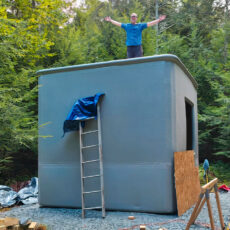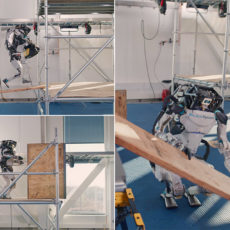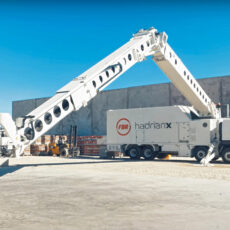
Heavy machinery doesn’t usually spark excitement, but Lumina’s ML6 Moonlander, a 32-ton all-electric bulldozer unveiled earlier this month, is here to change that. This San Francisco startup’s beast, dubbed the Tesla of heavy equipment, swaps diesel’s roar for quiet, high-tech muscle that’s ready to reshape construction sites.
Powering the Moonlander is a 750-horsepower electric motor that delivers the kind of muscle you’d expect from a diesel-guzzling giant, but without the roar or fumes. It can shove dirt, rocks, or whatever else you throw at it for 8 to 10 hours on a single charge, thanks to a battery system designed for real-world grit. Need to juice up? Plug it into a 300 kW charger, and it rockets from zero to 80% in just 50 minutes—faster than your phone. A full charge takes a little over an hour, and even a quick 30-minute lunch break can get you to 50%. Regenerative braking, like what you’d find in an electric car, helps squeeze extra life out of every charge by recapturing energy as the beast slows down.
- Volvo truck toy with buildable excavator – Inspire kids to build their own heavy duty construction vehicle with flatbed trailer, toy excavator and...
- Working truck features – Check out the 6-cylinder moving piston engine then steer the truck toy into position, detach the trailer and fold down the...
- Explore the excavator – Kids can swivel the excavator 360 degrees on its tracks then use the pneumatic pump to lift and lower the scoop
Lumina Dozer in action. Pretty cool. pic.twitter.com/LySV9LxHSM
— Connor Kapoor (@connor_kapoor) May 22, 2025
Lumina’s founders, Ahmed Shubber and Federico Di Palma, calls the Moonlander “a 32-ton modular electric dozer—designed & built from scratch to handle real-world work and train our own autonomy stack.” That modularity is key. Unlike traditional bulldozers, the Moonlander’s design allows for modifications and upgrades, whether it’s swapping attachments or boosting its brain via over-the-air software updates. This isn’t just a machine; it’s a platform that can evolve, much like a smartphone getting new features with each update. Shubber’s vision is bold: “This is just the start. More products. Bigger revenue targets. Unforgettable moments.”

What sets the Moonlander apart is its eerie silence. Traditional bulldozers rumble like a thunderstorm, but this one glides along with just the crunch of its 36-inch steel tracks and the scrape of whatever it’s pushing. That quiet operation isn’t just a party trick—it’s a safety and comfort win for workers on noisy, chaotic sites. Picture a construction zone where you can actually hear your coworkers without shouting over an engine’s growl. Plus, with no diesel engine to maintain, there’s less downtime and fewer oil-stained headaches.

Remote operation is where the Moonlander starts to feel like it rolled out of a sci-fi flick. Equipped with 360-degree cameras, it can be controlled from afar, letting operators tackle dangerous terrain or hazardous conditions from the safety of a control room—or even a cozy office miles away. This isn’t a gimmick; it’s a lifeline for jobs like mining or disaster recovery, where keeping humans out of harm’s way is paramount. The remote capabilities can also be upgraded via those over-the-air updates, ensuring the dozer stays sharp as tech advances.

The Moonlander’s 15-foot blade is another standout. It’s double the volume of a typical bulldozer blade, meaning it can move more material in a single pass—think of it as a snow shovel on steroids. This makes it a rival to heavyweights like Caterpillar’s D9, despite being closer in size to the smaller D6. Lumina didn’t just slap an electric motor on an old chassis, either.
Lumina’s ambitions don’t stop here. The company is already working on a 100-ton beast called the Blade Runner, hinting at a lineup that could shake up the industry. Posts on social media note Lumina’s goal to be “the Tesla of heavy equipment.” That’s not just hype—the Moonlander’s blend of power, sustainability, and tech makes it a serious contender in a field dominated by diesel dinosaurs.
Construction isn’t known for being green, but the Moonlander challenges that. By ditching fossil fuels, it cuts emissions on sites that typically belch smoke. It’s not perfect—mining the materials for its batteries has its own environmental toll—but it’s a step toward a cleaner industry. For contractors, the real draw might be the long-term savings: no fuel costs, less maintenance, and a machine that can adapt to new tasks.
[Source]










